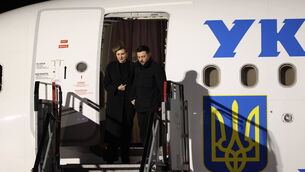Nine out of 10 homes have internet access, CSO figures show

Fixed broadband connection is the most common type of internet access (84% compared to 49% using mobile broadband), while just 1% of homes access the internet via a narrow broadband connection.
However, there is a wide variation in terms of the parts of the country that have access to fixed broadband.
For example, connection rates are highest in the Dublin region at 93%, while the Border and Midlands regions come in at just 72%. Densely populated areas have fixed broadband penetration of 88%.
Of the 11% of homes with no internet access, 43% reported that this was due to a “lack of skills”. Further barriers reported included equipment costs being too high (13%), and access costs being too high (10%).
A total of 45% of households without internet access reported that this was because they “do not need internet”.
In the Midlands region, 17% of households with no internet access reported that this was because there was no internet access available in the area. By contrast, not a single household in the Dublin region reported this as a problem.
An estimated 81% of individuals used the internet in the last three months. However, among those aged between 16 and 25 years old, this jumped to 95%.
Less than half of people in the 60-74 years age category had been online in the last three months. A total of 46% of individuals in this older age group has never used the internet.
Seven out of every 10 internet users used the internet every day, with daily usage of the internet jumping 9% since 2013. Of the 16-29 years age category, 92% admitted to being online every day.
Of the internet activities surveyed in 2017, the most popular activity was “finding information on goods and services” (86%). The next most common internet activity was accessing e-mail (85%), followed by social networking at 72%. Internet banking was used by more than 70% of users in the previous three months.
Clothes or sports goods were the most popular online purchase in the last 12 months (44%). The next most common types of internet purchases were tickets for events and holiday accommodation (37%), followed closely by other travel arrangements (36%).
Almost 80% of those who bought goods or services online did not experience any problems. Just 2% reported problems with fraudulent activity while 3% had problems with wrong or damaged goods/services delivered.












